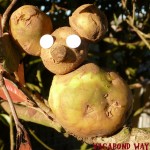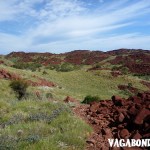Did you Know Australia had so many Kangaroos!?
I stood quiet and said nothing. I wondered if everybody around me could tell my entire mind was turning circles – everything I previously thought seemed to be wrong. How could this be? I have had an image in my mind my entire life and all of sudden I am finding out I am mistaken? Never to my knowledge have I misidentified a kangaroo until right then. I was learning that Australia had so many different types of kangaroos.
Before moving to Australia when it came to identifying kangaroos, I would have placed myself in a top percentile of people able to do this fairly confidently. First off, I knew their country of origin was Australia, (and bonus points – I could find Australia on a map), I knew that they hopped, they are both a mammal and a marsupial, they have a pouch, their front legs are shorter than their back legs and that their babies are called joeys. I thought I was doing pretty good.
For us, as we drove more than 40,000 kilometers or 24,854 miles around Australia, we set out to see for ourselves, what, exactly is the difference between kangaroos, pademelons, wallabies, wallaroo’s and whole bunch of other animals. Here is a selection of some of the mammals that either are, or at least look like a kangaroo.




.jpg&container=blogger&gadget=a&rewriteMime=image%2F*)


We were enjoying the antics of the two Eastern Grey Kangaroos above when all of a sudden we hear this splashing and caught this one coming to join them. He just splashed threw the water with so much ease and once it got too deep he swam across the channel splashing his way up the sand bank on the other side.






Having a look through piles of sea weed on the beach, this is the Western Grey Kangaroo. Although superficially similar to the Eastern Grey Kangaroo, Western Grey Kangaroos usually have thicker coats and are darker brown in colour.
.jpg&container=blogger&gadget=a&rewriteMime=image%2F*)




.jpg&container=blogger&gadget=a&rewriteMime=image%2F*)





Looking out across a field at a wallaby and learning I was incorrect in thinking it was a kangaroo is why I love to travel. Before Australia I didn’t even know some of these amazingly unique animals existed, and now they have become apart my of world. Just as much as travel makes my world larger, it also makes it smaller. I constantly realize how little I know and how much greatness there is. I live to be shown this over and over again. Now, after all these new animals we have seen and experienced, I still feel similar to as I did at the beginning of this story. I would say, rather confidently, that I could identify a kangaroo.
These same booking resources are the same exact ones we use to find deals and acquire points for more travel.
I will never recommend to get a credit card unless you are 100% solid to pay it off in full every month. If you will and are going to be making some big purchases, this Chase card is the same exact card we use and it offers great travel points and perks.
Finally, if you have not used AirBnB before, use this special link to sign up and get $40 off your first booking.
 Previous Post
Previous Post Next Post
Next Post
Who would of thought that kangaroos have those long, strong tails for climbing through the rocks. I always thought they had those tails just for being really good at boxing. I will have to re-think things.
After seeing kangaroos in action, their tails are so strong, they use them so much for balance and coordination.
…FANTASTIC introduction into the diversity of kagaroos!!! More than I ever imagined! I’m guessing you really had to be searching to find all these…
Yes- a lot more kangaroos than we ever imagined as well. Just amazing.